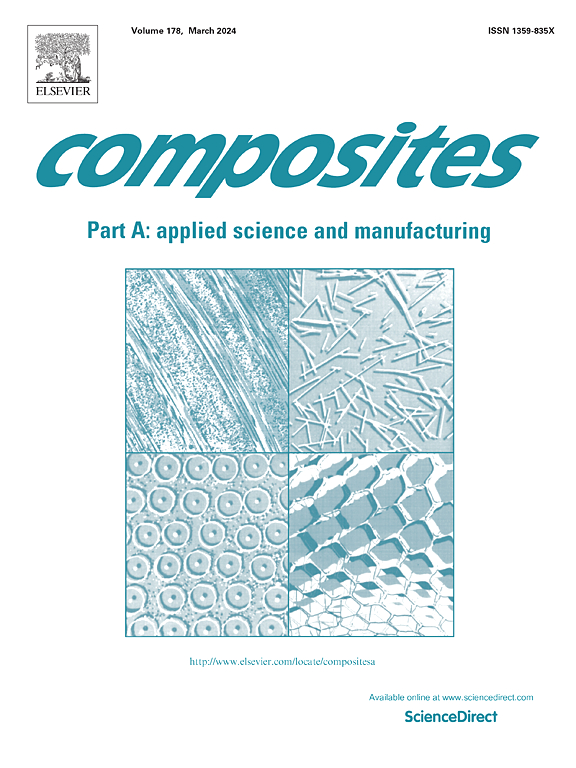Pulp fibre foams: Morphology and mechanical performance
IF 8.1
2区 材料科学
Q1 ENGINEERING, MANUFACTURING
Composites Part A: Applied Science and Manufacturing
Pub Date : 2024-10-09
DOI:10.1016/j.compositesa.2024.108515
引用次数: 0
Abstract
Cellulose (pulp) fibre foams serve as bio-based alternative to fossil-based cellular lightweight materials. The mechanical properties of cellulose fibre foams are inferior compared with traditional polymer foams and available information is often limited to compression properties. We present a comprehensive analysis of cellulose fibre foams with densities ranging from 60 to 130 kg/m3, examining their compression, tensile, flexural, and shear properties. Key findings include a high mean zenithal fibre angle which decreases with increasing density, as well as a high strain rate amplification (SRA) in compressive strength, which also decreases with increasing density. With respect to formulation, the addition of carboxymethyl cellulose (CMC) enhanced fibre dispersion, bubble homogeneity of the wet foam, and dimensional stability of the end-product.
These results provide a foundation for numerical models and advance the understanding of cellulose pulp fibre foams, highlighting their potential for certain applications.
纸浆纤维泡沫:形态和机械性能
纤维素(纸浆)纤维泡沫是化石基蜂窝轻质材料的生物替代品。与传统聚合物泡沫相比,纤维素纤维泡沫的机械性能较差,而且现有信息通常仅限于压缩性能。我们对密度为 60 至 130 kg/m3 的纤维素纤维泡沫进行了全面分析,研究了它们的压缩、拉伸、弯曲和剪切性能。主要发现包括:平均天顶纤维角较高,随着密度的增加而减小;抗压强度的应变率放大(SRA)较高,也随着密度的增加而减小。在配方方面,羧甲基纤维素(CMC)的添加增强了纤维的分散性、湿泡沫的气泡均匀性和最终产品的尺寸稳定性。这些结果为建立数值模型奠定了基础,促进了对纤维素纸浆纤维泡沫的理解,突出了其在某些应用领域的潜力。
本文章由计算机程序翻译,如有差异,请以英文原文为准。
求助全文
约1分钟内获得全文
求助全文
来源期刊

Composites Part A: Applied Science and Manufacturing
工程技术-材料科学:复合
CiteScore
15.20
自引率
5.70%
发文量
492
审稿时长
30 days
期刊介绍:
Composites Part A: Applied Science and Manufacturing is a comprehensive journal that publishes original research papers, review articles, case studies, short communications, and letters covering various aspects of composite materials science and technology. This includes fibrous and particulate reinforcements in polymeric, metallic, and ceramic matrices, as well as 'natural' composites like wood and biological materials. The journal addresses topics such as properties, design, and manufacture of reinforcing fibers and particles, novel architectures and concepts, multifunctional composites, advancements in fabrication and processing, manufacturing science, process modeling, experimental mechanics, microstructural characterization, interfaces, prediction and measurement of mechanical, physical, and chemical behavior, and performance in service. Additionally, articles on economic and commercial aspects, design, and case studies are welcomed. All submissions undergo rigorous peer review to ensure they contribute significantly and innovatively, maintaining high standards for content and presentation. The editorial team aims to expedite the review process for prompt publication.
 求助内容:
求助内容: 应助结果提醒方式:
应助结果提醒方式:


